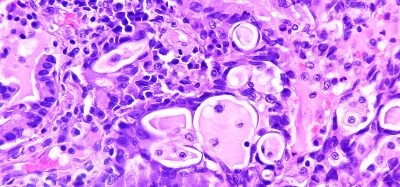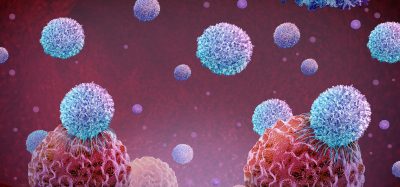RNA protein shown to protect telomeres and support cancer proliferation
Posted: 15 March 2021 | Victoria Rees (Drug Target Review) | No comments yet
A team has revealed a function of ADAR1, responsible for RNA editing, discovering an isoform used for cancer growth, making it a drug target.

Scientists have identified a new function of ADAR1, a protein responsible for RNA editing, discovering that the ADAR1p110 isoform regulates genome stability at chromosome ends and is required for continued proliferation of cancer cells. According to the researchers from The Wistar Institute, US, these findings reveal an additional oncogenic function of ADAR1 and reaffirm its potential as a therapeutic target in cancer.
The team explain that, similar to changing one or more letters in a written word, RNA editing allows cells to make discrete modifications to single nucleotides within an RNA molecule. This process can affect RNA metabolism and how it is translated into proteins and has implications for neurological and developmental disorders and antitumor immunity.
There are two forms of the ADAR1 protein, ADAR1p150 and ADAR1p110. While the RNA editing role of the former, located in the cytoplasm, has been extensively characterised, the function of the nuclear ADAR1p110 isoform remained elusive.
“We discovered that in the nucleus, ADAR1p110 oversees a similar mechanism to ADAR1p150, the better-known cytoplasmic variant, but the editing process in this case targets particular nucleic acid structures called R-loops when formed at the chromosome ends,” said Professor Kazuko Nishikura, the lead researcher. “Through this function, ADAR1p110 seems to be essential for cancer cell proliferation.”
R-loops form during gene transcription when, instead of dissociating from its template DNA strand, the newly synthesised RNA remains attached to it, leading to a stable DNA/RNA hybrid. While these structures can be beneficial for transcriptional regulation in certain conditions, accumulation of R-loops can cause DNA damage, chromosome rearrangements and genomic instability and is linked to neurological disorders and cancer, the researchers say.
Nishikura and colleagues found that ADAR1p110 helps the cells resolve R-loops and prevent their accumulation by editing both the DNA and the RNA strands involved in the structure and facilitating degradation of the RNA strand by the RNase H2 enzyme.
They found that ADAR1p110 depletion results in accumulation of R-loops at the chromosome ends, indicating that ADAR1p110 acts on R-loops formed in the telomeric regions and is required to preserve telomere stability. Telomeres protect chromosome ends from the loss of genetic material at each cell division and their progressive shortening eventually triggers growth arrest or cell death.
Cancer cells bypass this mechanism to become immortal. Researchers found that ADAR1p110 depletion leads to extensive telomeric DNA damage and arrested proliferation specifically in cancer cells.
“It has recently been suggested ADAR1 inhibitors could potentiate tumour response to immunotherapy by interfering with certain cytoplasmic ADAR1p150 functions,” said Nishikura. “Based on our findings on the role of nuclear ADAR1p110 in maintaining telomere stability in cancer cells, we predict that ADAR1 inhibitors would be very effective anticancer therapeutics by interfering with two different and independent pro-oncogenic ADAR1functions exerted by the two isoforms.”
The study was published in Nature Communications.
Related topics
Immuno-oncology, Immunotherapy, Molecular Targets, RNAs
Related conditions
Cancer
Related organisations
The Wistar Institute
Related people
Professor Kazuko Nishikura







